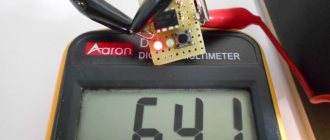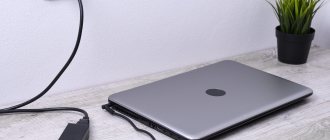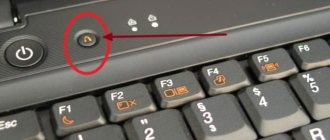A laptop charger can also fail. A rechargeable battery will not be able to power a computer device on its own for so long.
What to do in this case, if, on top of everything, there is still no way to leave the house or order the necessary accessory on the Internet?
The main thing in this matter is not to panic! In the case when the network adapter does not work, and you urgently need to charge the laptop battery, it is advisable to use some alternative methods for charging the battery. You will learn how to charge a laptop without charging from the article below. Details below.
Questions - answers
How to charge a laptop on a plane or train?
On long-distance trains, the device is charged through 220 V sockets. They were designed to charge phones and other weaker devices. Only PCs are allowed to be recharged. We charge on planes by asking the conductor. The outlets are under their control.
Can I charge my laptop via USB?
Only if the batteries of both devices are compatible. It won't work via a USB port because it doesn't have enough power.
How to charge your PC
This is impossible.
Is it possible to charge a laptop via USB from a smartphone?
Unfortunately, this is not feasible even with a full-fledged connector. There are some models in limited quantities. For example, Philips Xenium or Xiaocai X6. The reason is simple - there is insufficient energy for the PC.
How to charge your phone through a laptop?
Everything is simple here. You can use the cable that came with your phone and connect one end to your smartphone and the other to your PC.
It is not surprising that the laptop will not charge from the phone, because even the power supply of a desktop computer is not enough for it. He needs from 19 W. And the computer unit has only 12.5.
The laptop does not work without a charger. What's the matter?
There are several reasons:
- Battery failure. The service life may have expired. If the battery drains quickly and takes a long time to charge, then it's time to change the part.
- Problems with the charging cable socket.
- The display is too bright.
- Heavy load on PC. Under heavy load, even a new battery will discharge quickly.
What if the USB port stopped working after charging
Sometimes the phone puts a lot of load on the USB port, and it stops working, as if it freezes. In such cases, you may also see the message “The USB device is not functioning properly and has exceeded the power limits for its hub port.” Then it is better to disconnect the phone from the computer and it is better not to charge it from it. In the window with a message about the problem, click the “Reset” button, if there is one.
But even after stopping charging, the USB port may still not work. In this case you can:
- Go to Device Manager
- find a broken “USB Root Hub” that will be marked with an exclamation point
- go to “Properties -> Power”:
- Click the “Reset” button.
But if this does not help, then disconnect the computer completely from the power supply. If this is a laptop, then it is also better to remove the battery for 10 seconds and put it back. Now turn it on and check.
Non-standard methods
Type-C
The laptop does not see bluetooth devices (headphones, speakers, mouse).
what to do? Every laptop has multiple USB ports. Basically, they cannot be used to charge the computer itself, only to connect and charge other devices: phones, tablets, hard drives, and so on. Modern models are equipped with USB ports of types B and C, which allow you to charge the device itself via a special cable (but not all, read the instructions).
There are several ways to charge via cable. Here we present the simplest one. You will need an external power supply with a Type-C connector.
- Check in advance which wire and connector you will connect the battery to - not all USB cables will work. If the laptop does not have the required cord or connector, you will need an adapter or adapter. You will recognize them by the name “Type-A to Type-C” and support for the USB 3.1 standard.
- Prepare an external battery.
- Connect the cable to the laptop and the power supply to the outlet.
Power Bank
Powerbank, also known as powerbank, is a portable charger that allows you to charge your computer anywhere. An additional advantage is that when charging reaches 100%, the unit automatically stops supplying current to the device, which will help preserve the battery life of the laptop.
A standard laptop requires a powerful power bank with a power of 45 Watts or more, otherwise the device simply will not charge. Lighter ultrabooks can run on medium-power memory.
List of actions:
- Charge the power bank.
- Connect a special USB adapter to the device.
- Connect the second connector of the adapter to the laptop's Type-C USB port.
If you connect the device to the “old” Type-B port, the laptop will also charge, but much slower. In this way, you can recharge your computer from several portable chargers and increase the standard battery life limit.
Autoinverter
A car inventor helps charge mobile devices on the go - it converts the standard 12-volt vehicle voltage into 220 V. And you connect a standard 19-volt power supply to a standard outlet. To connect smartphones, tablets and other low-power electronics, the inverter has a USB port with a voltage of 5 V.
- Connect the car inverter to the car's cigarette lighter according to the instructions.
- Connect a standard power supply or use a USB connector.
- Insert the USB adapter into the special connector on the inverter.
- Connect the other end of the adapter to the laptop USB port (Type-C).
As with a power bank, the charging process depends on the selected laptop port.
There are special adapters and power supplies that charge the computer directly from the car's cigarette lighter. They need to be selected specifically for your computer model.
Wind and electric generators
When connected to electricity generators—solar batteries, wind generators, and the like—the battery quickly restores its charge. Minus: charging the device on days when there is no wind or sun will become even more difficult. But solar panels, like power banks, can store accumulated energy using built-in batteries.
- Buy a suitable charger. Be sure to look at the output power: the ideal option is again from 45 watts.
- Buy special adapters for the new charger.
- Connect one end of the adapter to the battery and the other to the device.
- Over time, the energy will gradually transfer to the laptop's base battery.
https://youtube.com/watch?v=oMsTtONiNyA
Using PowerBank
You should use PowerBank to charge your laptop this way:
- Buy wire with a special adapter for laptops, connect it to the connector on the PowerBank.
- Purchase an adapter for the device you are using, connect the wire from the PowerBank to the adapter and charge the device.
Thanks to this method, when using several charge storage devices (PoverBank), you can increase the operating time to several hours.
You can use Type- C cable if your laptop has such an interface.
How to enter BIOS - methods and keyboard shortcuts
How can you charge a laptop without a charger?
How to charge your phone in any unclear situation
There are many situations when it is not possible to use the laptop’s native charger. For such situations, special devices have been created. The main thing is to know how to use these gadgets correctly.
Method 1: USB port
There are three types of USB ports - A, B and C. The first two connectors are not suitable for charging a laptop from the mains. The reason lies in the bandwidth - it is equal to 4.5 W. In order for the device to receive power, this figure must be at least 30 W. Type-C or 3.1 is a new generation of 100W ports. The presence of a port is indicated by a corresponding entry in the technical documentation.
- Purchase an adapter and an external power supply that allows you to connect cables with a USB 3.1 connector.
- Power the device from the mains power supply. Wait until charging finishes.
The advantage of this method is the unlimited possibilities for using the laptop. The downside is that not all models are available with new generation ports.
Method 2: Power Bank
An external portable battery is designed for charging laptops, smartphones, and other modern gadgets where standard charging is not possible. The main characteristics of a Power Bank are the type of ports and capacity, and functionality depends on the model.
You need to choose a battery that supports charging a laptop, with a capacity of at least 10,000 mA/h. The higher it is, the longer the device is maintained. Preference should be given to the one that comes with several types of adapters.
The Power Bank is charged from a high-voltage network in advance, otherwise it will be completely useless. Therefore, when purchasing a battery, you should carefully consider the time it can support the operation of the laptop.
- Connect one end of the adapter to the battery.
- Insert the second connector into the appropriate connector on the laptop.
The stability and functionality of the port will directly affect the charging of the device. When there are several batteries, the operation of a laptop computer can be brought to normal standard operation.
Method 3: Autoinverter
It is not possible to charge a laptop directly from the cigarette lighter: you need a device to convert the base voltage of the vehicle. It's called an inverter and you can buy it on the Internet or an electronics store.
The main thing is not to forget about a special adapter cord with connectors, since charging from a laptop is not always at hand. In the situation under consideration, this component is missing.
- Connect the converter (inverter) according to the procedure described in the instructions.
- Connect the adapter to the laptop and gadget.
There should not be any difficulties, but it is important to take into account some nuances. You should purchase a model with protection against discharge, when a sound signal sounds, overheating and overvoltage
It is recommended to connect the inverter only when the engine is running, and also try not to turn off or start the car while it is on.
Method 4: Car adapter
Another option for those who drive a lot. There are special adapters for laptops on sale that replace standard chargers.
Instructions:
- Insert the adapter into the cigarette lighter.
- Connect the connector to the appropriate port.
The downside is the limited range of laptop models for which such power supplies are produced. Another disadvantage is that most adapters are made in China and have poor build quality.
Method 5: Solar battery
Portable compact solar-powered generators will help out in absolutely any situation. They do not take up much space and ensure full operation of the laptop.
- Buy a gadget. Check the specifications in advance, otherwise the battery may not be able to charge the laptop.
- Connect the laptop to the generator. The kit usually comes with several connector options, from which you can choose the one that suits you.
- Wait a bit. Power will soon be supplied to the portable laptop computer.
The disadvantage is the dependence on weather conditions. On the plus side, the generator can be left in the sun to accumulate energy at any convenient time.
The above methods for charging a laptop allow you to do without a charger and be able to work on the laptop even in the absence of electricity. All that remains is to choose and purchase a suitable gadget in advance.
Charging via USB
The first thought that comes to any user’s mind is to charge the laptop without charging via the USB connector. And it is worth noting that this idea will be incorrect, because this cannot be done through standard USB 2.0 and 3.0 outputs.
Important! You cannot charge a laptop via a USB port for several reasons. The first is voltage. USB bandwidth is 4.5 W, and the most undemanding laptop requires at least 30 W to power. The second reason is that charge transfer in USB versions 2 and 3 is only possible in one direction, namely to the output.
Surely many users charged a smartphone, tablet, and even an external battery through this output in a laptop. In this case, one could notice that the laptop gives up its charge, and not vice versa. Modern smartphones are equipped with a new power connector – Type-C. It has a few differences from previous versions of USB, and one of them is 100W of bandwidth and bidirectional operation. Thus, if the laptop is equipped with a Type-C output (the second name for USB 3.1), then you can charge the battery through it . It should be understood that a power supply will be required with a power and voltage similar to that of the native charger. In this case, a smartphone unit will not work because it is low-power.
This logically implies the possibility of charging a laptop from a Power Bank. To do this, the latter must have Type-C and sufficient capacity. Here everything depends on the capacity of the laptop battery, but it is worth understanding that about 40% of the capacity is lost during charge transfer, which means you should not buy a Power Bank with a capacity equal to the gadget’s battery; it will only be charged by 60%.
You can also charge a laptop from your phone, but only if several conditions are met: both gadgets are equipped with USB 3.1, and the smartphone must support the corresponding function and have a large battery.
What are the differences between ports
How to charge your phone battery with a frog
The fact is that the USB standard itself was developed quite a long time ago, back in 1994. And then the question of supplying pure power through this bus did not arise at all. Subsequently, over more than 20 years, quite a few types of USB connectors were invented:
But the only thing they all had in common was that they could not provide power transmission of more than 4.5 Watts. If this was at least enough for a smartphone or tablet, then for a laptop you need at least 30, and preferably 50 or more. Accordingly, charging a laptop via USB was out of the question until a more energy-intensive version appeared. And Type C became it. It is almost half the size of the usual 2.0/3.0 standard port:
But it can easily provide current transmission of up to 100 Watts in both directions - that is, both to the connected devices and from them to the host. This is quite enough not only for ordinary models, but even for gaming laptops. You can take one or two powerful power banks with you on the road and not worry about not having an outlet at hand!
What about owners of old models?
Unfortunately, they will not be able to charge a laptop via a USB port under any circumstances. They just don't know how to do it. How to be in this case? Just buy an extra battery and carry it with you. Or, as an option, save money to buy a new mobile computer. You may object - you can’t save enough money for this! But if your work depends on it, then maybe it makes sense to invest? You decide! Good luck!
Which laptops can be charged via USB?
Based on what was discussed earlier, it is clear that for autonomous recharging the device must have a special Type C connector. But not everything is so simple. As before, the main task of USB ports is to connect peripherals and ensure high-speed information exchange.
USB Power Delivery standard
One of the specifications built into Type C is the open standard USB Power Delivery (USB-PD). It describes the transfer of power between devices that are equipped with connectors. Transmission, not recharging, since at the next moment in time it can serve as the charger (Source / Source) or who is being charged (Sink / Receiver). Using a special protocol that runs parallel to regular USB, they exchange messages with each other. Using them, the donor and acceptor can change roles at any time, change the current, voltage, or go into sleep mode. It provides energy transfer of up to 100 watts - energy that is enough to recharge any mobile device or peripherals (monitor, printer, scanner). If necessary, it is provided with five energy profiles: up to 5V@2A, up to 12V@1.5A, up to 12V@3A, up to 12–20V@3A and up to 12-20V@4.75-5A.
For example, any external device can be connected. By default, the first level is used - a nominal voltage of 5V with a current of 2A. Information is exchanged, the required voltage and current are determined. An adjustment occurs and after that the required one is supplied to the device.
Determining the purpose of USB type C
The simplest and most effective way to find out the purpose of ports is to study technical data. laptop documentation. It always describes in detail the purpose of each port and its functionality.
The international USB-IF consortium has approved uniform requirements for external markings, but manufacturers do not always apply them correctly and in full.
Thunderbolt port
This port is a regular USB- Type C connector , but with its help, the charging speed increases several times. ThunderBolt is an analogue of QuickCharge , which was developed for the Android OS platform.
ThunderBolt support is available in laptops from Apple and Lenovo. In both cases, you need to connect the Type-C cable to the appropriate connector on the power supply , then to your personal computer and continue charging the device.
The power supply and cable are included with MacBook laptops; in the case of Lenovo, this is not always the case, but ThunderBolt connectors are required to be specified in the specification.
Is it possible to charge a laptop battery without a charger?
If there is a need to restore the battery capacity without a charger, then you should be aware that any unprofessional intervention in any electronic component will automatically lead to termination of the manufacturer’s warranty.
If the device is no longer under warranty or the research itch is so great that even the risk of losing a working device cannot be stopped, then you can use the recommendations outlined in this article.
The main rule when carrying out such manipulations with technically complex household appliances is to have average knowledge in the field of electronics and electrical engineering. Proficiency with a soldering iron and the necessary tools when performing such work is also mandatory.
All of the above recommendations do not matter if the charger fails during a business trip or travel. Moreover, when traveling outside the Russian Federation, many tourists will also not be able to charge the laptop even if they have an adapter.
Next, we will describe methods by which you can charge a laptop without a charger and you will understand how difficult it is.
How to charge the battery without a laptop
It is quite a dangerous activity, but sometimes there may be no other option left - charging a laptop battery without a laptop. To do this, you will need a battery, a charger, a multimeter, electrical tape and a copper wire.
- Any battery has several outputs with contacts ranging from 4 to 9. To charge, the user needs to find the two needed with polarity + and -.
- Sometimes the manufacturer puts special notes on polarity or puts them on a label glued to the battery, but most often this does not happen, so you have to look for the necessary options using a multimeter.
- When the contacts are found, you need to connect two copper wires to them, which are secured with adhesive tape for reliability.
- After securing the wires, the circuit is again checked using a multimeter, but this time for the presence of throughput.
- The attached wires are connected to the charging unit; do not forget to observe the polarity. Now all that remains is to wait for the charging process to complete.
How can you not charge?
But before we move on to working methods, and, unfortunately, there are not many of them, we need to talk a little about useless ones that are completely not worth wasting time. The first of them is attempts to charge a laptop left without charging via a standard USB connector.
The owner, who vaguely understands that when connecting a phone, player or other portable device through the port, not only data transfer is carried out, but also recharging, can conclude: why not try in the opposite direction?
It would seem that this is no more difficult than making wireless charging yourself; Just connect a charged smartphone or portable battery to the connector and wait a little. In fact, charging a laptop this way will not work for two main reasons:
- unidirectional flow transmission - in accordance with accepted standards, USB ports of generations 1.0, 2.0 and 3.0 are designed to be recharged from a carrier device, and not vice versa;
- too low voltage - even if the first limitation were removed (this is fundamentally possible), the 5 volts and, accordingly, 2.5–4.5 watts used to connect portable devices are clearly not enough to power a laptop, which requires about 15–20 volts and from 40 watts.
Without using the transformer, which for a user who only wants to quickly and correctly charge a laptop left without a charger will not solve the problem - which means you need to finally remove your smartphone from the USB port and try any of the methods described below.
The second option that doesn't work is using an incompatible charger from a laptop of a different model or manufacturer. It’s not worth telling that companies use different power supply standards and external attributes - plugs - in their chargers (even within the same line).
At best, a user who dares to test this in practice will see that the laptop battery is not charging; at worst, it will ruin the battery by supplying it with an inappropriate voltage and power current.
Be that as it may, before using someone else’s charger, it is worth looking at what voltage, current and power it provides (the corresponding data is on the “box” in the center of the cord in the Output section), and compare with those recommended by the manufacturer - they are easy find by turning the laptop over and looking for the factory sticker on the case.
How you won't be able to restore battery capacity
There are a lot of “folk” ways to restore the capacity of a laptop battery, which can cause not only the failure of expensive equipment, but also lead to a fire or serious injury.
Via USB connector
Unfortunately, only a limited number of laptop models can be powered by a USB connector. Moreover, it is impossible to charge via regular USB at all, only via the USB-C connector, and then only for those devices where this is the only way to charge.
For devices in which such an option is not provided by the manufacturer, a homemade alteration of the output will not bring the desired result, because the voltage at the output of such a port is much lower than necessary.
Using mechanical force
As you know, the life of salt batteries can be slightly extended if you slightly deform their body in the middle. The use of mechanical stress on lithium cells is strictly prohibited, because even with minor damage to the case, the battery may catch fire. In addition, further use of such a product will be impossible.
By heating or cooling the battery
The maximum operating temperature of the lithium battery is limited to 60 degrees Celsius. If this parameter is exceeded, the battery may explode. You should also not cool the laptop battery. This procedure, as a rule, does not lead to any negative consequences, but the battery charge will not be restored from such “hardening”.
In general, you should not experiment with lithium batteries. The best option for restoring the charge of such products is to connect the computer to an adapter with suitable parameters. To protect yourself from an unpleasant situation when the charger suddenly fails, it is enough to purchase a spare charger of the same type.
How can you not charge your laptop and why?
One of the most popular mistakes that almost all computer owners make is incorrect shutdown. Many people simply close the laptop lid without finishing their work. Because of this, the device goes into sleep mode, but continues to work continuously. Of course, this subsequently has a detrimental effect on its performance, speed and battery life. Even in the first lesson of computer science or any computer courses, they teach how to complete the work correctly. You should not neglect these tips, since they are the ones that allow you to extend the life of your laptop for many years without loss of quality.
Do not expose the laptop to direct sunlight or place it near various heating devices. This point also includes the inadmissibility of working with a laptop that is on the carpet or sofa. During operation of the power supply, it becomes very hot and requires natural cooling from the outside.
Being on upholstered furniture, he cannot get what he wants, which is why his functionality suffers. An excellent solution in this situation would be to purchase special laptop stands with a small fan that cools the power supply, even if the computer is lying on the sofa or bed.
How to charge batteries from a disassembled power source
The laptop battery is filled with lithium batteries (18650).
We carefully disassemble the battery, remove the batteries and charge them separately. Thus, we will restore the entire battery as a whole. If the battery does not open, then take some sharp, preferably non-metallic, object (for example, the blade of a knife from the office) and slowly run it along the seam of the battery, which is located directly on the body of the computer device itself.
Then we unsolder the internal wires that go from the controller to the batteries, and carefully remove the lithium batteries from the laptop case. To restore them correctly, you will need to use a special memory for standard sizes (18650).
Having charged the batteries, we begin assembling the battery in the reverse order. To return the seam, we use glue, tape or simple electrical tape.
Question answer
Can I charge my laptop on a train or plane?
Yes, you can charge your laptop on a long-distance train thanks to 220V sockets. Initially, they are designed to recharge phones, electric brushes and other weak devices, but the conductors do not prohibit connecting other equipment.
As for airplanes, you will have to ask the flight attendant for help, since the sockets are in their department.
What are the standard laptop battery capacities?
Mostly from 4200 to 4800 mAh. There are enhanced batteries with capacities from 6600 to 8800 mAh, but they are very rare and are not very different from regular batteries, except in size.
How long will it take
This depends on various indicators: battery volume, current strength, and so on. On average, with a power of over 45 watts, the battery will charge from 0 to 100% in 3 hours.
The minimum power of the power supply is 12 V × voltage 3.5 A = 42 W.
Is it possible to charge a laptop from another laptop?
Yes, but not via USB port. The reason is the same as with Type-C ports: the connector outputs only 4.5 W. This is enough to charge a smartphone, tablet or player, but a laptop needs 30 watts or more.
If the computer batteries are compatible, you can run wires from one to the other. If not, it’s better not to take risks: firstly, you will have to weave a whole “web” from the wires, and secondly, it is unknown what will happen to both batteries later.
Are there ways to charge a laptop via WiFi?
No, It is Immpossible. Wi-Fi is a technology for connecting to the Internet via a radio signal. This signal has nothing to do with the electrical network.
And from the phone?
Not possible, even if the phone has a full USB connector. There are few such models - for example, Philips Xenium or Xiaocai X6, and these are rather exceptions to the rule. But the USB port will not be able to provide enough energy to charge the laptop, forget about it.
Will the laptop charge from the phone charger?
Most likely, no - the power supply is not enough. If there is no other choice, you can try, but the battery will take a very long time to reach one hundred percent, even longer than a day. Smartphone chargers have a voltage of 5 V, and the current barely reaches 1-2 A. Let's remember the formula above and calculate the power - up to 5 W and below. It is eight and a half times less than that of a laptop “charger”.
Charging without a laptop
This goal may be set precisely by those who want to charge a large number of batteries without connecting them to a laptop. Previously, it was still possible to do this by purchasing special equipment: special chargers were sold that charged the battery. Now there are no such devices. Therefore, you will have to act using engineering thought.
What you need
In addition to ingenuity and basic knowledge in the “Electricity” section from the ninth grade physics textbook, you will need tools and materials.
- Multimeter.
- Resistor.
- Small-sized single-core copper wiring.
- Insulating tape.
- Wire cutters.
- Perhaps needles and a soldering iron.
- Power adapter.
You still can’t do without charging from a laptop. Because it is precisely this that represents the power adapter. However, any memory for a laptop is suitable, not just your own one. A resistor is a device for adjusting resistance that can be purchased at any electrical store. You may need to solder wires to it. But you can try to connect them in another way.
Connecting the battery
Next comes the most difficult part. After all, the fact is that the battery does not have two contacts, but several 6-7 at once. This quantity is due to the fact that modern lithium-ion batteries are assembled from several batteries. If they are charged unevenly, it will cause fire or other serious defects. Additional contacts were created precisely for this purpose: they are responsible for the safe operation of the battery.
It is important to observe polarity when connecting
We only need the negative and positive poles. As practice shows, they are located as follows: two on one edge and two on the other. You can determine what charge they have using a multimeter. If the value is positive, the device will display a “+” sign, if negative, it will be displayed with a “–” sign. The tester probes may be too thick, so for convenience, you can tape metal needles to them with electrical tape.
The wires must be connected to the power adapter and to the battery itself. Moreover, a resistor must also be included in this circuit. We connect the adapter directly through the connector, which is inserted into the socket on the laptop. We attach the positive wire inside, and the negative wire outside.
It is important to ensure that the wires do not cross. Otherwise your circuit will be closed
We connect the resistor to the cable with the “+” sign. For this purpose, it is advisable to solder the wires to the device. The set resistance should be 30–60 Ohms. To begin with, for the sake of safety, you can make it higher, and then lower it. In fact, the resistor here only serves as insurance. You can do without it, but if you don’t want the battery to burn out during a power surge, it’s better to install it.
Having completely connected all the elements of the circuit, connect the adapter to the outlet. Throughout charging, you must monitor the condition of the battery. If it overheats, it is better to stop this “experiment”.
My laptop charger is broken, what should I do?
Indeed, charging failure is the most common problem, due to the fact that the cable often frays and fails. This usually occurs at the junction of the wire and the plug that is plugged into the outlet.
The laptop charger is broken, what to do:
- In the same way, the wires fray in the area where the connectors are connected to the device itself. You don't need a charger to charge your laptop. There are a lot of modern devices and homemade ways to charge the device.
- To do this, you will need a regular, standard phone charger. In this case, charging can be done using a USB connector. You need to connect a USB cable to it, which is then inserted into the power supply and connected to the outlet.
- That is, this is the same device that is used to charge the phone, the only difference is in a different connector. You will need to select a USB cable that has appropriate connectors at both ends.
- You can purchase such a device at any electronics store. One end is inserted into the USB connector on the laptop, and the other into the phone charger.
Laptop charging repair
Can I charge it from another laptop?
Many users have a logical question: is it possible to recharge a laptop battery using another laptop. Theoretically, it’s possible. But there are a few “buts” here.
- First, you will need to find an identical laptop model with the same battery. In this case, all technical characteristics, component markings and other specifications must match exactly. Even if the batteries look the same in appearance, it is not a fact that they will work in a “foreign” device,” but most likely they will fail. How many of your friends have a similar gadget, and how many would agree to conduct dubious experiments:
- Secondly, another problem lies in the fact that after receiving information about a new power source, the laptop may refuse to recharge it. There is also no guarantee that the battery itself will mistake a third-party device for a “native” one. Such troubles occur rarely, but are not completely excluded.
Therefore, as a result, we either will not be able to charge the component, or we will have to face an additional problem - the battery controller is blocked.
How to charge laptops using USB
All laptops have USB ports, and most laptop USB ports cannot be used for charging. It is only intended for power cutting, used for charging other small devices such as phones, etc., and also for transferring data between two devices. Most laptops have Type A ports, but the latest ones are known to have USB Type B and Type C ports, which allow you to charge the laptop via a USB cable.
USB Type A ports only serve to send power to other devices, not receive power. USB Type C is a new innovation in the technology niche. The port has been used in many new laptops to power up. The introduction of USB Type C is a welcome development as it will eliminate the age-old problem of finding alternative ways to charge laptops without a charger. There are various ways to charge laptops using a USB cable.
Power banks are great additions. Power banks can be used to power laptops. The wattage rating of the power bank to be used is a very important factor
Before purchasing, be sure to pay attention to the rated power of the power bank. Most laptops are rated 18v
Using a power supply rated less than 18V is a waste of time. Only high voltage banks can do this job. Just connect it to your laptop via USB ports. Power banks are very portable. With it, you can charge your laptops anywhere, even inside a taxi. Thus, for heavy laptop users, it is recommended to get a powerful bank.
Laptops can also be charged using HDMI. In this case, combined with USB-C type. To do this, the adapter is simultaneously connected to an HDMI cable and a USB-C cable.
Direct charging connection to laptop
The essence of this method of charging a laptop without a charger is almost identical to the previous one. You need to determine the polarity of the charger, then determine the polarity of the connector. As a rule, the center is “+”, the edge is “-”. It is worth using a power supply , the current voltage of which is not much different from that needed by the laptop.
should take two conductors , connect them to the contacts on the charger, connect the other ends to the laptop socket in accordance with the polarity, and secure them in some way. It is advisable to insulate the structure .
Is it possible to charge a laptop via USB?
Laptops have become an integral part of the modern world and have almost completely replaced bulky desktop computers. The popularity of these gadgets is not surprising, because they retain all the potential of an average computer, but at the same time they are small in size and mobile. However, it is mobility, or more precisely, attachment to a power source, that is the main negative feature.
Power supply for laptops
Everyone knows that special adapters are used to power laptops, which are individual for each model. And if the “charging” breaks down, it is almost impossible to connect the laptop to the network... or is it still possible? Some experts claim that laptops can be charged using a USB port, but is this true? Let's find out.
What types of USB ports are there?
A USB port is an indispensable part of absolutely all modern gadgets, including laptops. It is primarily intended for data transmission, and in some low-power devices it is used for charging. The USB connector was first introduced into technology in 1994, and throughout its existence it has undergone many changes.
Today, laptops use two versions of ports:
They are used to connect peripheral devices and are therefore designed for a charge throughput of no more than 4.5 W. And to charge an average and not very powerful laptop, at least 30 W is required. Therefore, charging laptops via USB ports of versions 2.0 or 3.0 is physically impossible!
Is there an alternative?
Quite recently, a new type of USB port was released - Type-C, which can be called a revolutionary solution. The fact is that this port has a throughput of up to 100 W, and this is already quite enough to charge even the most powerful laptops.
What not to do when charging a laptop
Reminder to owners of portable gadgets:
| How you can't charge | How not to charge |
| 1.Using USB 2.0. or 3.0., so here it is possible to transfer energy only to the output and there is not enough bandwidth to recharge the laptop. | 1.Using a power adapter from another laptop whose power is higher. This may lead to overheating or failure of the device. |
| 2. Using a power supply with a power and voltage lower than that of the native charging of the portable gadget. | 2. Using homemade chargers - the slightest miscalculations in the circuit can lead to damage to the laptop. |
| 3. Without using any additional accessories (generator, “foreign” charging, solar battery, etc.). | 3.Charging the battery separately from the laptop or using a direct connection is a dangerous activity, which is also fraught with damage. |
May be of interest: How to improve laptop cooling - 5 ways
It is better to use branded components. But if you still need to somehow charge a laptop battery without a “native” charger, you need to use proven techniques that will not lead to equipment breakdown. At least 6 real options are already known to readers. The choice is up to the users.
To start
You do everything at your own peril and risk
You try all the methods below at your own peril and risk. Charging without a native adapter can cause the laptop's power controllers to burn out, the motherboard to malfunction, and the high voltage can cause the wires to catch fire or melt.
It’s better not to interfere without basic knowledge
The charging options we have provided require minimal knowledge and experience with electricity. But if you have little experience, it is better to stop and ask knowledgeable people for help.
Do not use a higher power adapter
The risk of breaking your laptop will increase sharply if you connect to a power supply with more power than the “native” adapter. Typically, the voltage should be no more than 19 volts, the current should be no higher than 3 amperes.
How to properly charge a laptop battery without a charger?
There are situations when you need to charge your laptop battery, but you don’t have a charger with you or you are away from electrical networks. Below are several ways to charge a laptop battery without a charger.
Are you wondering whether it is possible to use a laptop without a battery when powered from the mains? Then read the article at the given link.
Charging a laptop battery in a car
This option for charging a laptop battery is suitable for those who spend a lot of time in the car. There is no socket in the car and the generator in the on-board network produces a voltage of no more than 14 volts. But the situation can be easily corrected by purchasing a portable inverter.
Car inverter for charging
Another disadvantage is the fact that you can charge the laptop battery through an inverter only with the engine running. That is, the option is ideal for charging on the go.
We advise you to read about why the battery on your laptop does not charge.
Solar battery
A solar battery for charging a laptop will come in handy outdoors. This is quite an interesting option to extend the battery life of a laptop.
Solar battery for laptop
The advantages of this method include convenience, mobility and free solar energy. Disadvantages include the need for clear weather and bright sun. Otherwise, the charge will be slow. In addition, the solar battery is only suitable for charging the laptop battery. She won't be able to work. Therefore, the option is suitable in case of prolonged exposure to nature.
Charger from another laptop
A completely logical solution would be to power the device with charging from another laptop. If their adapters are compatible, then you just need to compare the power. If the third-party option has more, then you should refrain from using such power, as the device may become very hot or even burn out. But at the same time, if the problem with the original charger is that the plug is broken, and the second charge was left over from an old laptop that no longer works, then you can simply cut off the plug and put it on your power supply. No special knowledge is required here.
- You should look at the original plug to see which cable goes to the plus and which to the minus. They will differ in color, with the plus going directly into the central part of the plug, and the minus attached to its outer part. This is the same for any laptop manufacturer.
- On the second plug, we look at similar parameters - which cable is to the plus and which to the minus. Now all that remains is to connect your power supply to the new plug, make sure that the wires do not intersect anywhere and insulate the connections.
This is a completely working homemade laptop charger.
In a similar way, you can assemble a charger from improvised means or specially purchased spare parts for this. You will need a plug for the socket, a power supply directly with the same power, voltage and current as the original unit. Obviously, you will need a plug, but you can do without it, although it is quite inconvenient and dangerous.
Charging assembly is simple: the power supply is connected to a plug and a plug; if the latter is missing, then the power supply must have an output with two soft strands of copper wire. The first should be connected to the minus, that is, in the socket to its outer surface, and the plus is connected to the pin that sticks out in the center of this socket.
The danger is that in this case it is difficult to ensure that the wires do not touch anywhere, so it is better to buy or select the appropriate plug.
Important! It should be noted that purchasing suitable spare parts will cost the same as a new power supply, so it is unwise to assemble it by hand from purchased components.
What laptop can't be powered via USB?
So, the first necessary condition under which you can try to charge a laptop is the presence of a USB-C port. Accordingly, laptops without it are deprived of such an opportunity in principle.
Regulation of power transmission through the connector is carried out by the Power Delivery protocol, which is responsible for the compatibility of the laptop and the connected device in terms of energy. By default, the minimum parameters are used - current up to 2 A at a voltage of only 5 V.
To charge a laptop battery, a higher protocol profile is required, which makes it possible to transmit current up to 3 A at voltages up to 12 V.
Method 1: charge the battery without the gadget itself
The point is to disconnect the battery from the PC and use other tools to replenish the missing energy. In this case, you should still have an adapter from the device on hand. Any other that meets the technical specifications will do.
One of the charging options is through another laptop. This is the simplest and most reliable method. To charge the battery, you just need to install it in the device and connect the mains power. This method has a drawback: the possibility of failure during further battery charging.
Using the Power Adapter
This is a radical method of how to charge a laptop battery without a laptop, which will require special tools:
- The adapter itself has a voltage higher than the battery voltage;
- Multimeter;
- copper wires (several pieces).
Additional parts will also be required: for example, electrical tape or adhesive tape, a soldering iron.
Step-by-step instructions on how to charge a laptop battery without a laptop:
- They take the battery and inspect the contacts (the number of terminals may exceed 7 pieces, this is normal);
- Determine the polarity (if the necessary information is missing, use a multimeter);
- The terminals are connected to the wires, having previously cleaned the ends of the latter; in order to secure them more securely, use adhesive tape.
The preparatory measures are completed and it is then possible to operate using a regular adapter. Attach the wires to the contacts on the input connector. The scheme always works here, according to which the middle segment corresponds to “plus”, and the extreme one to “minus”.
This is the main most common way to charge a laptop battery directly.
Connect the plug from the power supply. Charging has started.
What are the main difficulties?
The main difficulty when trying to charge a laptop battery directly is the inability to properly connect the contacts of the charger to the battery terminals. When making a charger yourself, it is very difficult to set the required voltage and current values.
When using a standard charger, difficulties also arise. The charger plug cannot be connected directly to the batteries; however, an attempt to solder the wires directly to the plus and minus connectors will render the product unusable.
Many laptop battery models may not have terminal markings, so it can be very difficult to connect the wires while maintaining correct polarity.
In general, there are many difficulties when trying to charge a laptop battery without a laptop, but with the right approach to solving the problem, you can perform this operation without compromising the performance of the charger and laptop computer.
Conclusion
You can charge your phone from your laptop. But it is recommended to do this only in cases of extreme necessity. At the same time, observe safety precautions. You cannot constantly charge your phone using this method.
All friends. I think that I have closed the topic of whether it is possible to charge a phone from a laptop. I hope I explained everything to you simply and clearly.
If you want to make money on the Internet, if you want making money on the Internet to become the main source of your income, read my article “How you can make real money on the Internet.” Go to the “Free Information Products” page, choose the courses you like on making money on the Internet, take it, study it and start earning money.
And that’s all I have for today. Good luck to everyone and see you soon!











